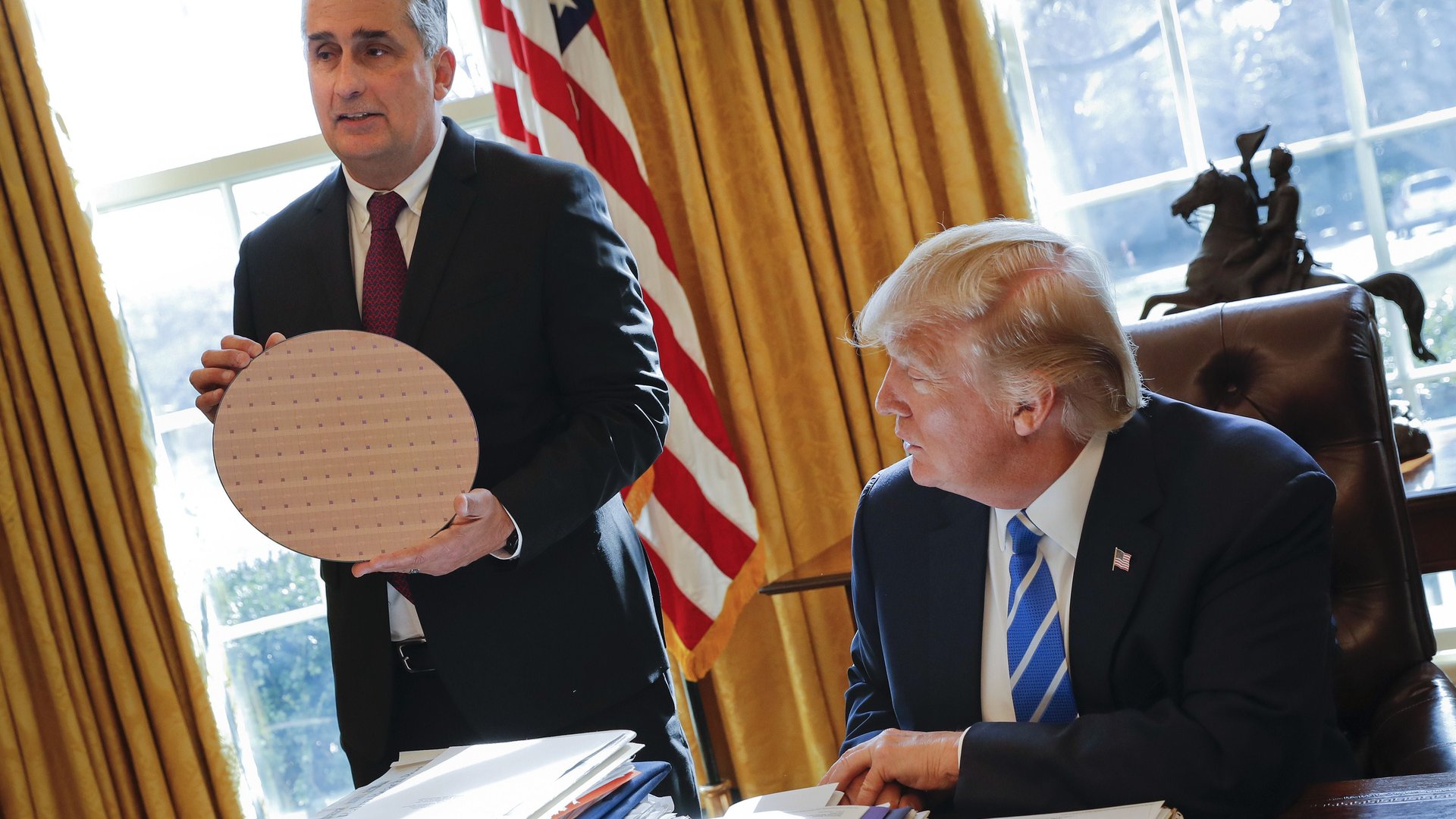Intel is hiring American workers to make high-tech chips that could displace American workers
Intel is building a $7 billion manufacturing plant in Arizona that will create “3,000 high-paying, high-wage, high-tech jobs,” CEO Brian Krzanich announced after a meeting with US president Donald Trump on Tuesday. “The people of Arizona will be very happy,” Trump said. ”It’s a lot of jobs.”


Intel is building a $7 billion manufacturing plant in Arizona that will create “3,000 high-paying, high-wage, high-tech jobs,” CEO Brian Krzanich announced after a meeting with US president Donald Trump on Tuesday. “The people of Arizona will be very happy,” Trump said. ”It’s a lot of jobs.”
Trump made “bringing back jobs” a central theme in his campaign, and he has continued to emphasize it in the early days of his presidency. Last month, for instance, the president told business leaders that he would use taxes and other penalties to punish American companies who move manufacturing jobs abroad.
In that context, there’s something a bit ironic about the Intel announcement. While the newly announced factory will create jobs, those jobs will be centered on producing computer chips that help enable another threat to jobs: automation technology.
Intel began building the Arizona factory several years ago. (At the time, Obama also praised the company for creating manufacturing jobs.) It then put the project on hold in 2014, citing changing market conditions. Krzanich said that Trump’s push to cut taxes and regulations influenced his decision to re-up the plant this year.
Intel is the world’s largest computer-chip manufacturer; its chips are used in cars, drones, wearables, and data centers. Some chips in the new factory will be made using Intel’s most advanced manufacturing process, which condenses computing power further than ever before, making said chips useful for technologies that involve huge amounts of data. In an email to employees, Krzanich mentioned possible uses that include artificial intelligence, automated driving, and “the factories of the future.” All of those advances are expected to replace and augment human labor.
Nor will automation be limited to industries heavy on manufacturing. A recent analysis by McKinsey concluded that 51% of activities in the US economy, accounting for almost $2.7 trillion in wages, could be automated using existing artificial intelligence. Although the analysis found few jobs could be automated entirely, and argued that automation is necessary to maintain global economic growth, it also warned that in the short term, artificial intelligence and robots could cause “significant labor displacement” and “exacerbate a growing skills and employment gap that already exists between high-skill and low-skill workers.”
The Obama White House, for instance, estimated that 3.1 million drivers in the US could lose their jobs to automated cars (the administration did not estimate how many new jobs might be developed, or lay out a timeline for when automation might occur). Among its suggestions: “Educate and train Americans for jobs of the future.” It turns out that at least 3,000 of those jobs of the future—at least the very near future—will be in manufacturing.